Based on photographs taken throughout Southern California, the paintings of Michael Ward capture moments of everyday life and commemorates a landscape that is always changing.
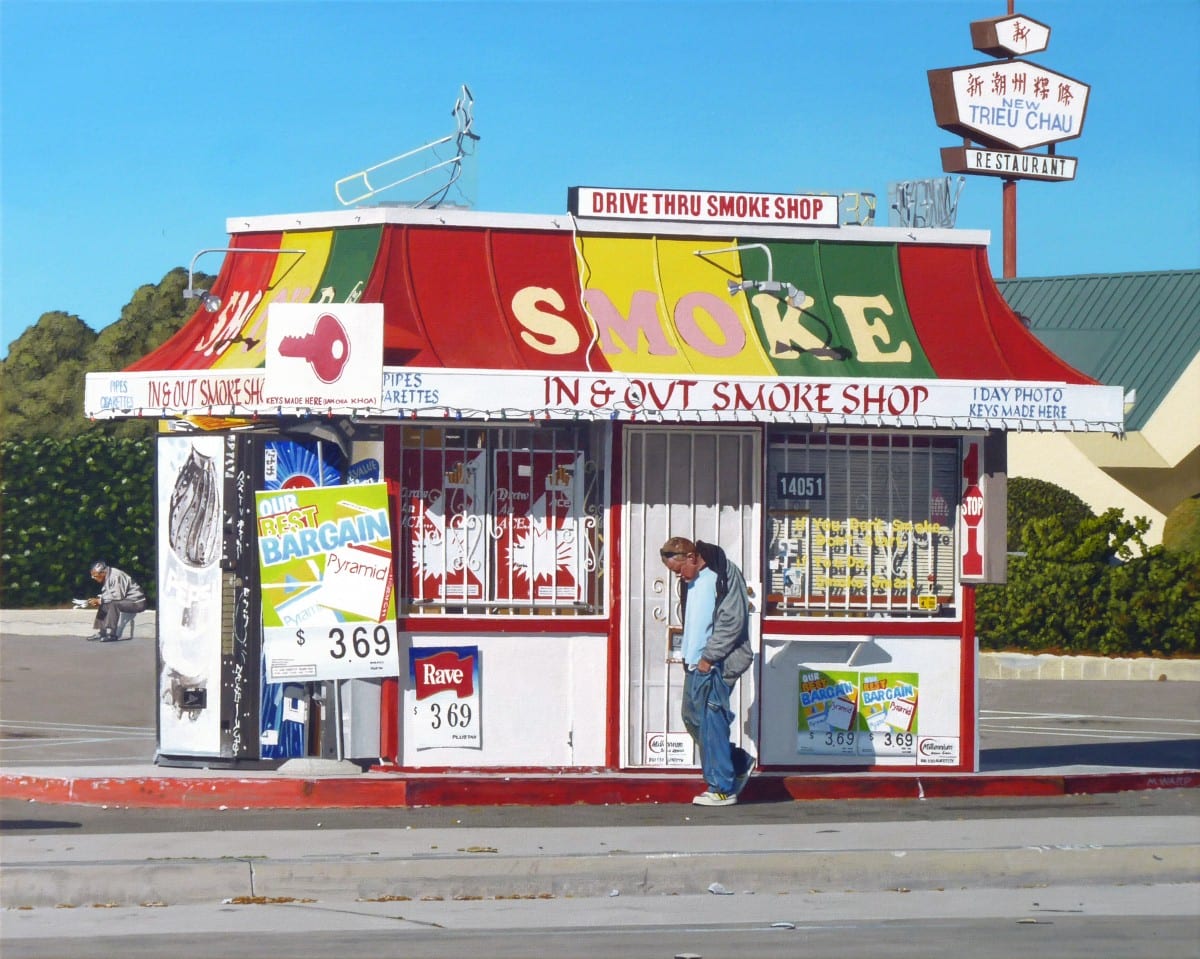
This is a painting of a drive-through cigarette stand in Garden Grove, CA. I titled the piece Consequences because everything in the scene seemed to be a consequence of something else, or more specifically, the consequence of some earlier misadventure. Starting at the top: the Vietnamese restaurant that replaced a Denny’s is a consequence of the influx the of Vietnamese community in Garden Grove and its surrounding areas, which in turn was a consequence of our failed war in Vietnam. The Asian man reading his newspaper is one of that diaspora. The Smoke Shop inhabits an old drive-through film processing stand. The demise of the business is a consequence of the end of film. And smoking, we know, has its own consequences, which are proclaimed on the shop window, “If you don’t smoke, don’t start. If you do, smoke smart.” (Whatever that means). What misadventures led to the young man’s dishevelment and bad posture we may never know.
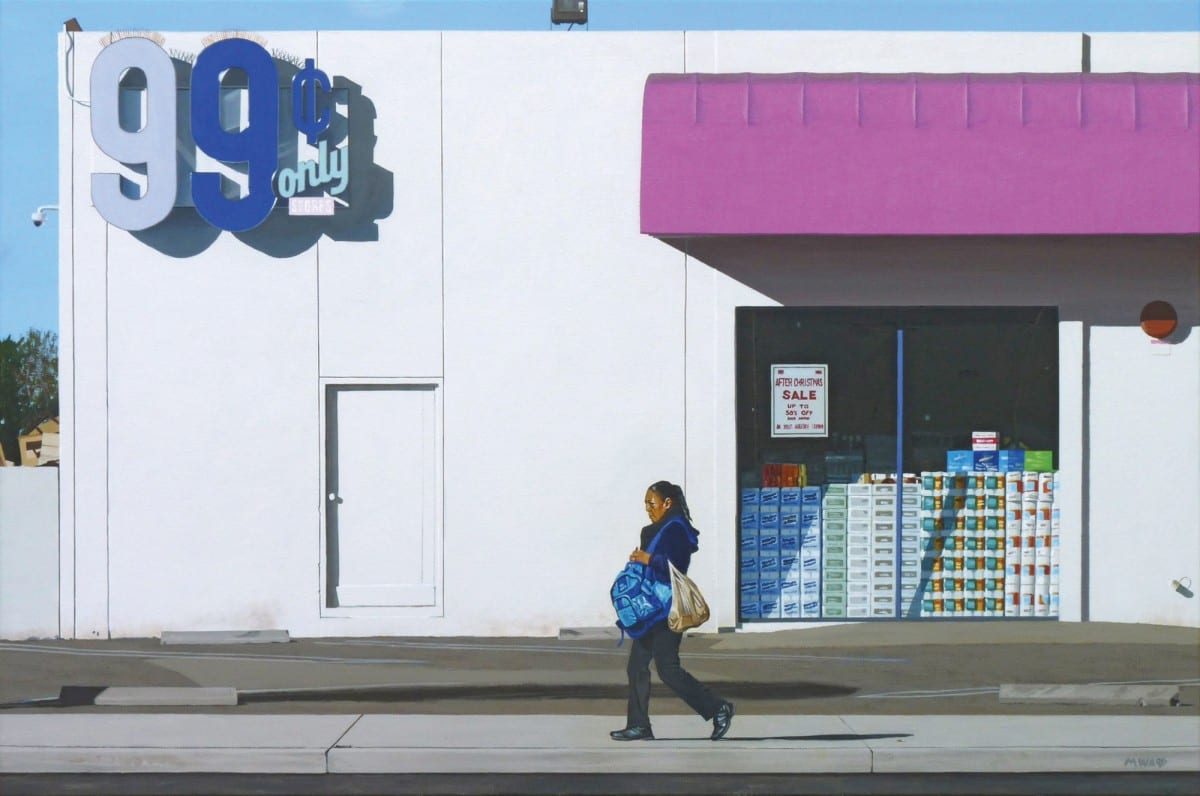
The 99 is a companion piece to Consequences, derived from images photographed at the same location in Garden Grove, CA. The 99 refers to both the 99 cent store and “the 99%,” from the Occupy Movement. The woman in the foreground is a representative of that 99%, carrying the burdens of the economic class. The white wall is itself a metaphor, as it pushes everything else to the margins of the composition. The locked door, the alarm, the half faded sign and the half-off poster all speak to promises unkept and dreams deferred or denied. Yet the 99% soldiers on.
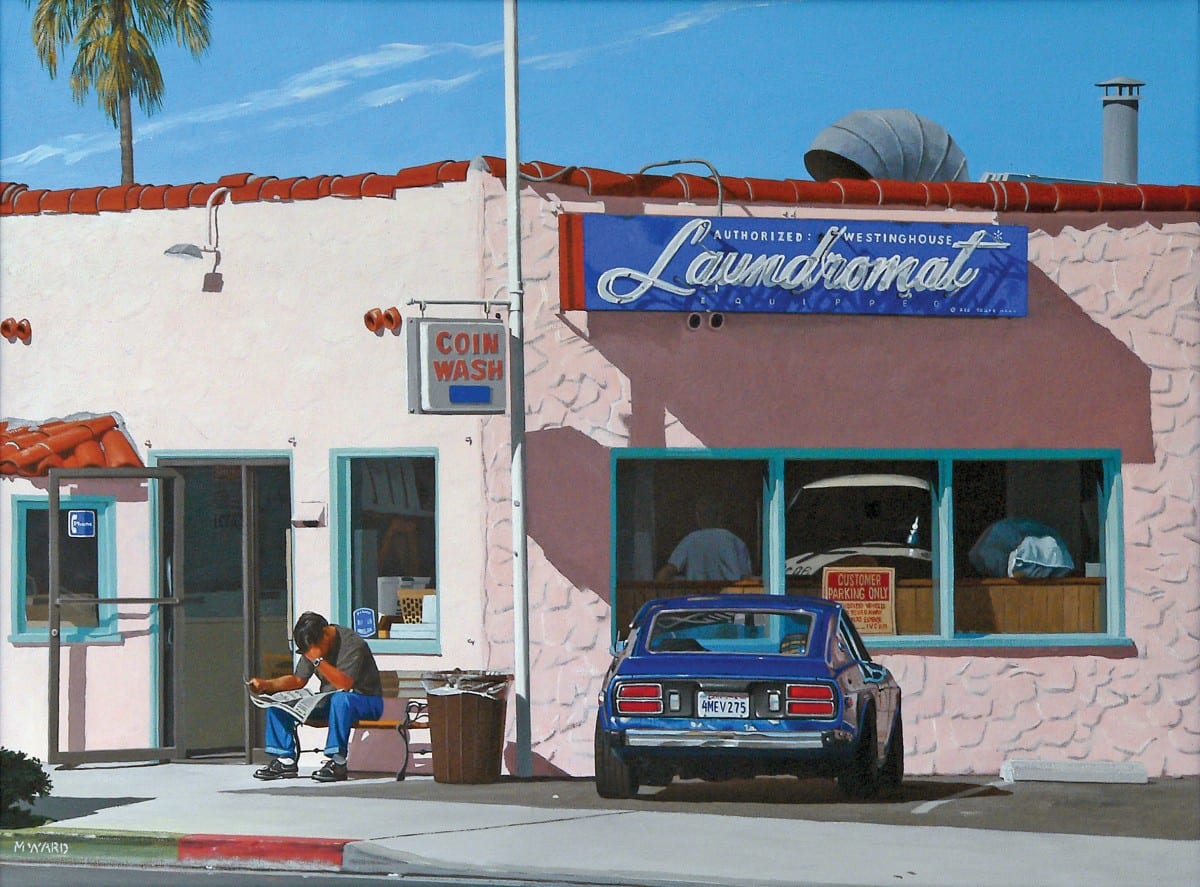
This painting is based on a photograph taken on a Thanksgiving weekend about a decade ago. The location is Balboa Boulevard in Newport Beach. The sign caught my eye first. The fellow reading the paper reminded me of my bachelor days, and the dead time spent at the laundromat, washing my entire wardrobe. The laundromat is gone now, though the building and the sign were still standing the last time I went by.
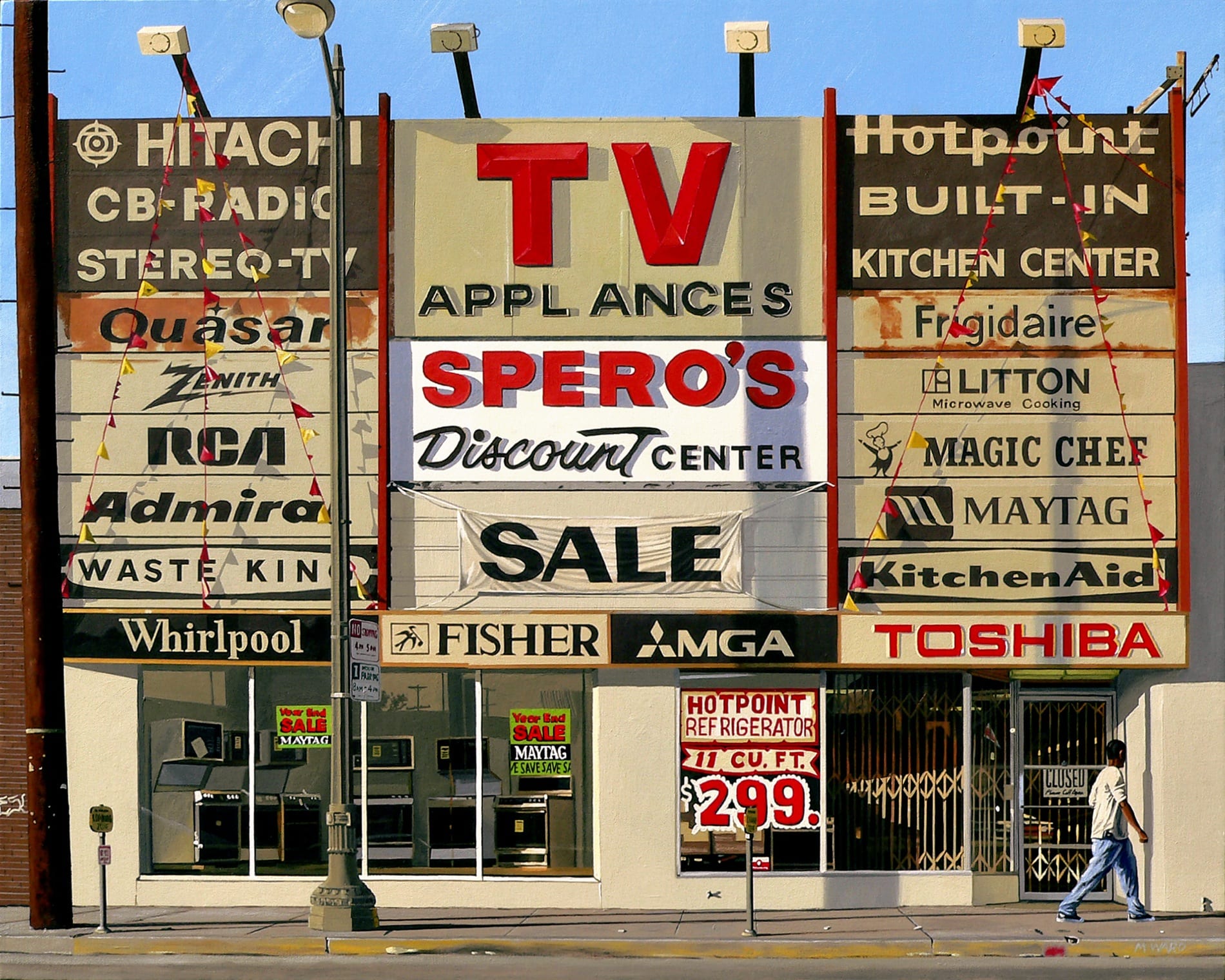
This was a store on Artesia Boulevard in Redondo Beach. The cacophony of signage attracted me when I shot the source photograph circa 1980. It’s one of those images that challenged me to paint it (in my own mind, at least), which I finally did 30 years later. By then, some of the brands displayed had disappeared, though many live on. City signage codes have put an end to such exuberance, and that, more than the outdated brands, gives this a nostalgic air. The missing “i” in “appliances” was in the original photo; I left it for whatever it might imply.
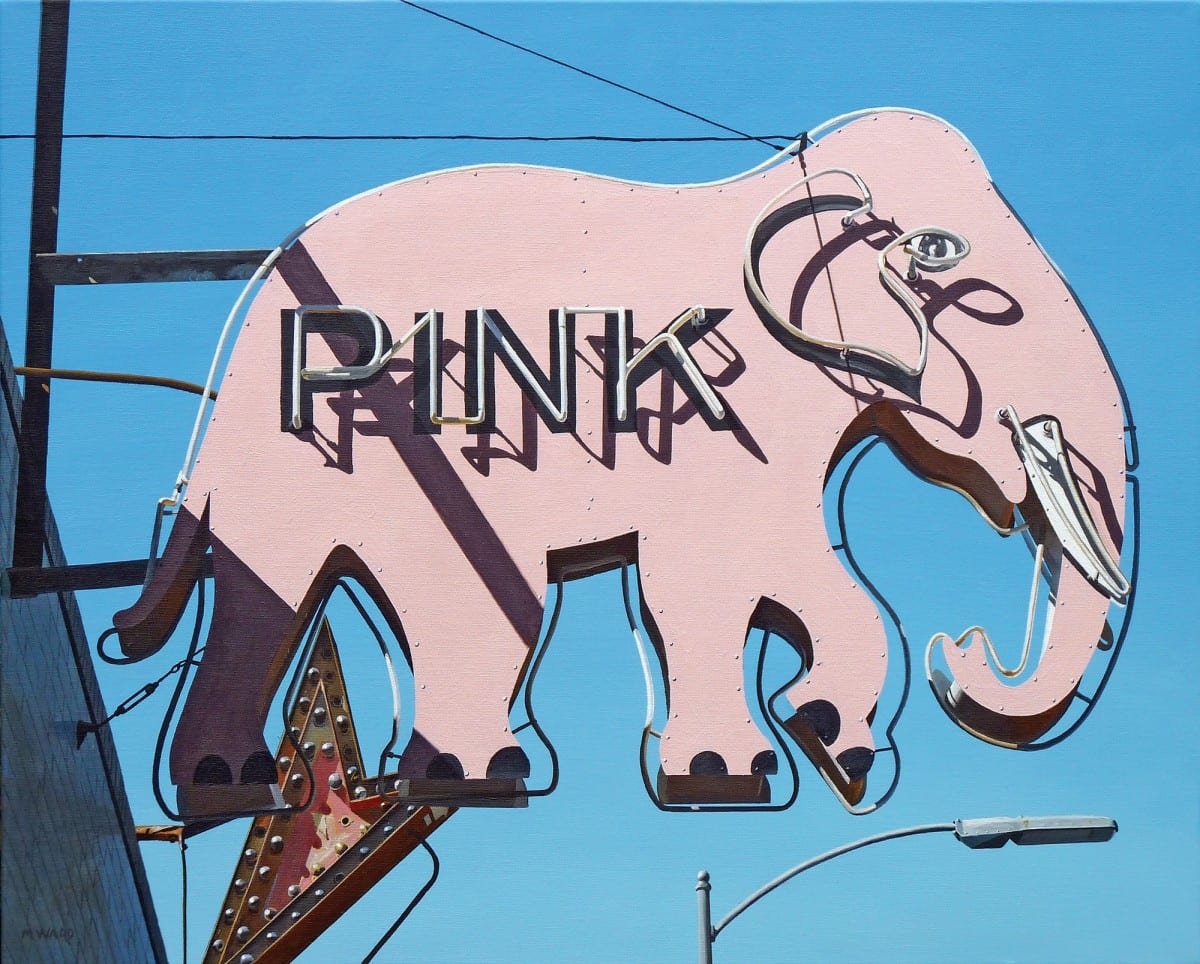
The sign marked a bar on 1st Street in Long Beach, CA, and is now the site of a Mexican restaurant. The source photo was taken on one of my many walks about Long Beach, when I lived there in during the 1970’s-80s.
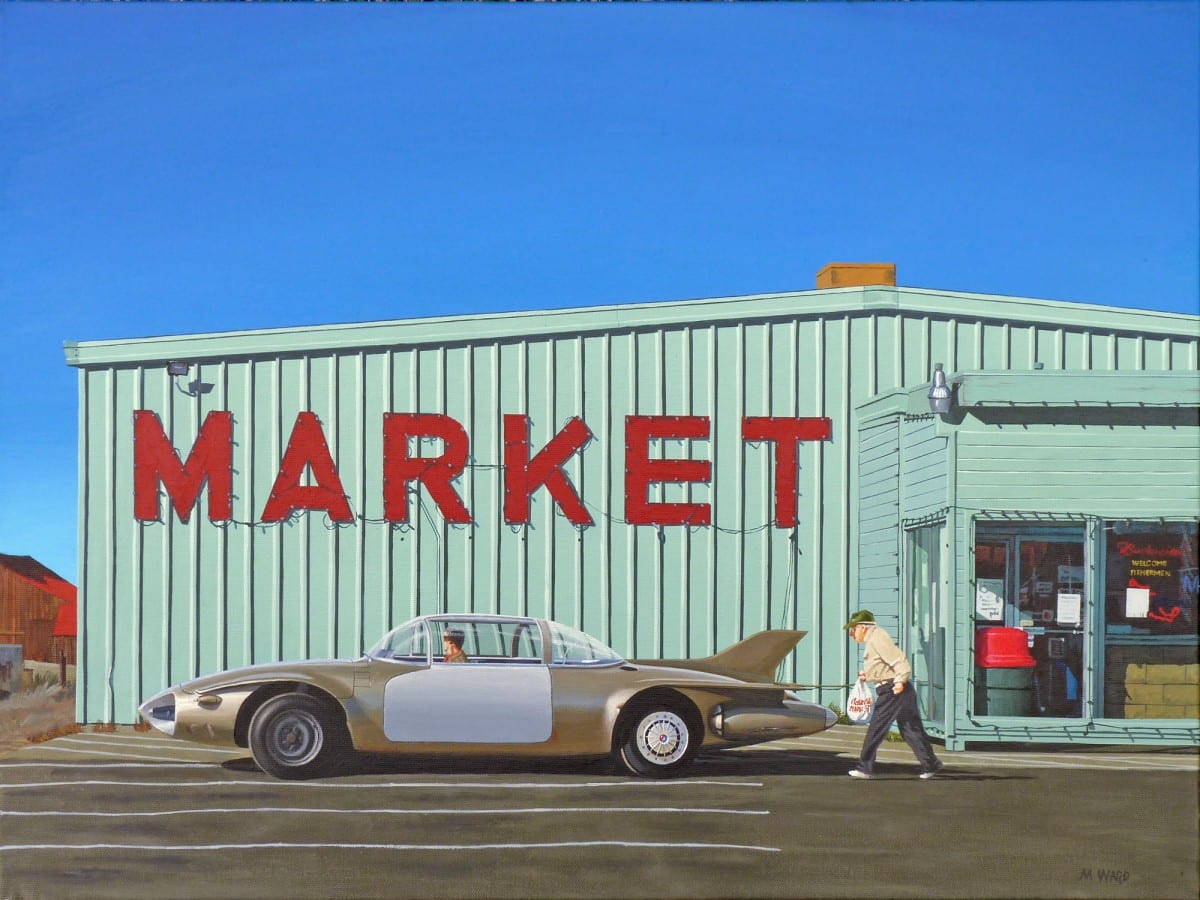
This painting combines three elements: a store from Bridgeport, CA, a figure from another photo, and the General Motors 1956 Firebird II show car. I have re-imagined the GM Firebird II show car as though it were an actual car, showing the wear and tear of 60 years of use. It has lost a hubcap, suffered some dents and scrapes, a windshield crack, and had a door replaced. Though they looked like actual cars, the GM show cars of the 1950s were one-off prototypes, often non-functioning, and promised more than they actually contained. So, too, the store—a flimsy pole barn with a cardboard-and-Christmas-lights sign substituting for a real sign. The walking man was shot in Costa Mesa; he, like the car, is showing his age. I debated what, or rather who, to put in the car waiting for him. At first it was going to be his wife, but in the end it was the driver from the original photo, now in the passenger seat, representative of the man’s younger self. We baby boomers were promised a utopian future in the 1950s, which quite came to pass. This painting shows that even if it had, it would still turn prosaic. Rust never sleeps, and we still must shop.
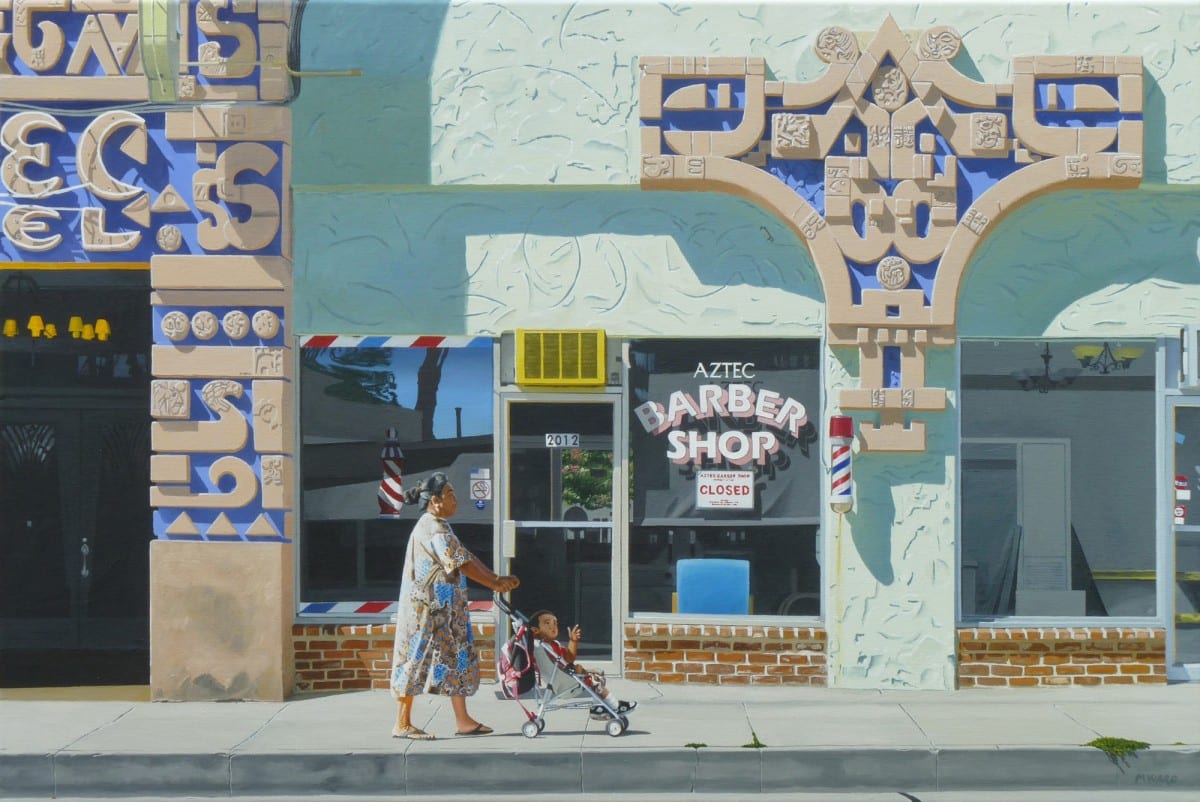
This painting features Monrovia’s Aztec Hotel, designed by architect Robert Stacy-Judd, and erected in 1925. The title Twilight of Empires depicts the decline and decay of at least three empires, the Aztec (or Mayan), the Spanish, and the American. The flamboyant decoration of the building has not fared well over the decades. The chaotic pattern of the woman’s dress mimics the detailing of the building. The child’s hand is pointing perhaps to the future, to the decaying edifice or to the gods above. I have changed the building number on Barber Shop to coincide with the end of the Mayan calendar and it’s foreboding of the end of the world. Situated on Foothill Boulevard, the Aztec Hotel is near Route 66, a traditional migratory route for the American empire. So geographically, too, we are at a twilight end.
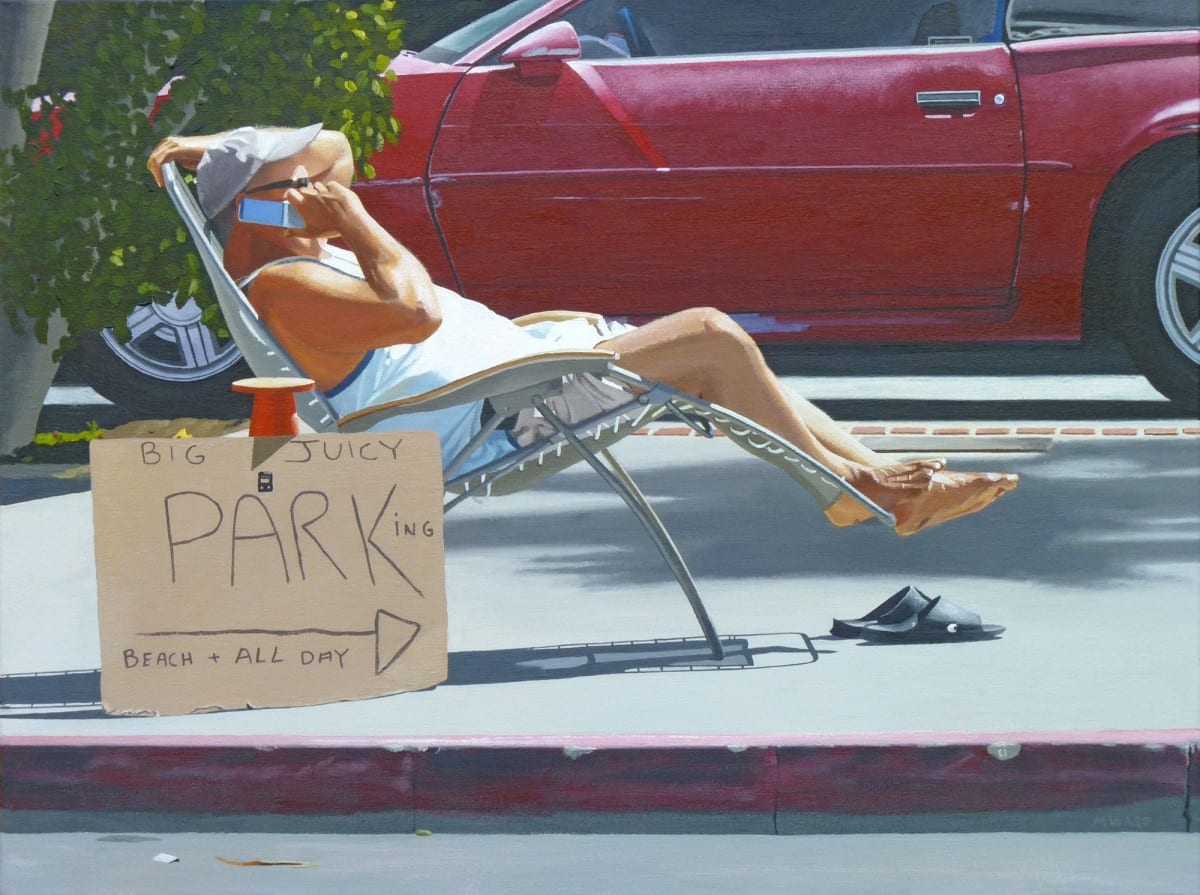
I took this picture of a parking lot attendant on Coast Highway in Laguna Beach on one of my visits to the galleries there. The parking lot is tiny, so the attendant spends most of the time working on his tan. As I will be in the Laguna Festival of Arts for the first time this year, I thought I should do some local scenes, without repeating the familiar tourist-centric tropes.

This begs the question, does art imitate life?